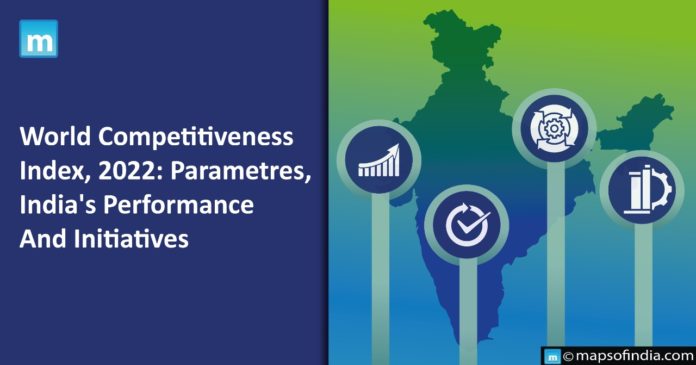The World Competitiveness Yearbook (WCY), initially published in 1989 by the Institute for Management Development (IMD), is a holistic yearly statement and global credentials point to country competitiveness. It assesses and rates nations based on how they maintain their skills to generate long-term value.
Parameters
It examines the four aspects (334 competitiveness criteria) to assess a country’s wealth and competitiveness.
- Economic efficiency
- Government effectiveness
- Business Effectiveness
- Infrastructure
What are the Index’s Highlights?
Global Top Performers
- Denmark has risen to the peak of the 63-nation list from third place last year, Switzerland has dropped from first to second, and Singapore has increased from fifth to third.
- Asia’s best performers include Singapore (third), Hong Kong (fifth), Taiwan (seventh), China (seventeenth), and Australia (nineteenth).
- Others: Due to the poor trustworthiness of the data provided, Russia and Ukraine were not examined in this year’s edition.
The Performance of India:
Performance on four dimensions
- In 2022, it has risen from 37th place to 28th place in terms of economic outlook and effectiveness.
- There has been an increase in the government’s competency from 46th position in 2021 to 45th position in 2022.
- Business effectiveness will improve from 32nd in 2021 to the 23rd in 2022.
- However, the advancement in the infrastructure sector remained unvaried at the 49th position.
Factors contributed to India’s remarkable Performance
- Significant advancements in the conditions of retrospective taxation in 2021.
- Several industries have been deregulated, including drones, space, and geospatial mapping, leading to a significant increase in economic advancement.
- India’s role as a driving force in the global drive to combat climate change, as well as India’s commitment to net-zero emissions by 2070 at the COP26 conference, are in line with its ranking strength in environment-related technology.
India’s Weaknesses
- India’s challenges encompass maintaining trade breakdowns and energy security, sustaining GDP growth after the pandemic, skill development and job creation, asset monetization, and capacity development for infrastructure growth.
Strength
- A trained workforce, cost competitiveness, economic dynamism, high education level, and open and positive attitude are the five most appealing features of the Indian economy for foreign investors.
What are the recent initiatives taken by India to boost its competitiveness?
Increasing Manufacturing Capability
- India has made commendable attempts to maintain industrial capacity resilience, such as through the Atmanirbhar Bharat and Make in India programmes, which focus on local supply chains and significant investment in manufacturing centres.
- The government has implemented the Production-Linked Incentive (PLI) initiative in various industries to enhance the country’s manufacturing capabilities and exports.
Technical Progress
- India’s Department of Telecom (DoT) has formed six task teams on 6G technology to enable technological advancement and increase competitiveness.
- India is actively involved in international technology governance forums through its New, Emerging, and Strategic Technologies (NEST) department.
- In addition to serving as the ministry’s nodal division for technology issues, the department facilitates collaboration with overseas partners.
A country that strikes a balance between economic and social advancement may boost productivity, which leads to increased competitiveness and, ultimately, becoming affluent.
As a result, it is vital to establish an environment that encourages enterprises to compete effectively in both domestic and international markets and guarantees that the typical citizen’s standard of life advances. Governments must provide an environment defined by efficient infrastructures, institutions, and regulations that promote firms to create long-term value.





